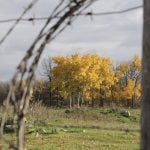
Tag Archives veterinary medicine

Skeletal deformities of beef calves
Vet Advice with Dr. Ron Clarke

Managing parasite resistance to livestock dewormers
There’s no easy way to extinguish resistance to dewormers, but producers can manage it and control parasites

Veterinary association calls on federal government to address workforce shortage
National testing centre is needed to onboard internationally-trained vets, CVMA says

Tips for monitoring newborn beef calves
Whether the calf was pulled or born without intervention, this resource can help you decide what to do next

Surviving scours
Prevention is the best medicine, but when you’re in the middle of an outbreak, it’s all about getting through it

Tech for cattle disease diagnostics edges into the Star Trek age
Researchers are testing new, compact equipment to see if it can quickly and accurately diagnose specific pathogens that cause BRD in the field and feedlot

Urolithiasis: a pasture and feedlot conundrum
Vet Advice with Dr. Ron Clarke

AUDIO: Researchers create ‘grimace scale’ for pain and stress in cattle

The link between toe tip necrosis in cattle and flooring
Flooring that provides traction without scraping hooves minimizes the risk of white line separation in cattle

One Health strategies help farm family navigate outbreak
The Haraga family calls in the troops to deal with a nasty zoonotic disease



